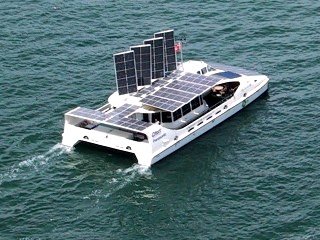Many if not all of you seem to have not graspt what I wrote previously so pleease read above quote and realize some things:
This technology already exists.......... solar panels, batteries, motors - they already exist! As i've mentioned the Navy is using the kind of motor I need or something similar in their SDV.........
I want to purchase a civilian equivalent of the motor used in the SDV if I can find out who manufactures it; I can buy it. The batteries and solar panels are all easy enuff to get.
Now the Navy has publicly acknowledged that the 17 ton SDV will travel submerged 8kts for 45 miles. For those on this thread who are priors - the US military for years said the SR-71 would go mac 3 when it went mac 7 and that it could fly 75,000 ft when it and not the space shuttle was actually the first aircraft to leave the earths atmosphere and return under its own power.......
So, if USN says the SVD can travel 8kts; it probably can go 15 maybe 20; with a disclosed range of 45 miles, it probably will travel a hundred - all this while fully submerged and with no recharging capability while under its own power.
Scale this back to a 6 or 7 ton vessel w/ displacement hull and said hull topped with solar panels......... as I've written my friend, daughter & myself have already designed the system - I need a motor - one similar to what is built for Navy's sdv but a commercial grade civilian equivalent as I hardly need it for clandestine combat conditions........ I'ld like to find out who manufactures this thing or something similar.
Thanx.....INTJonn



